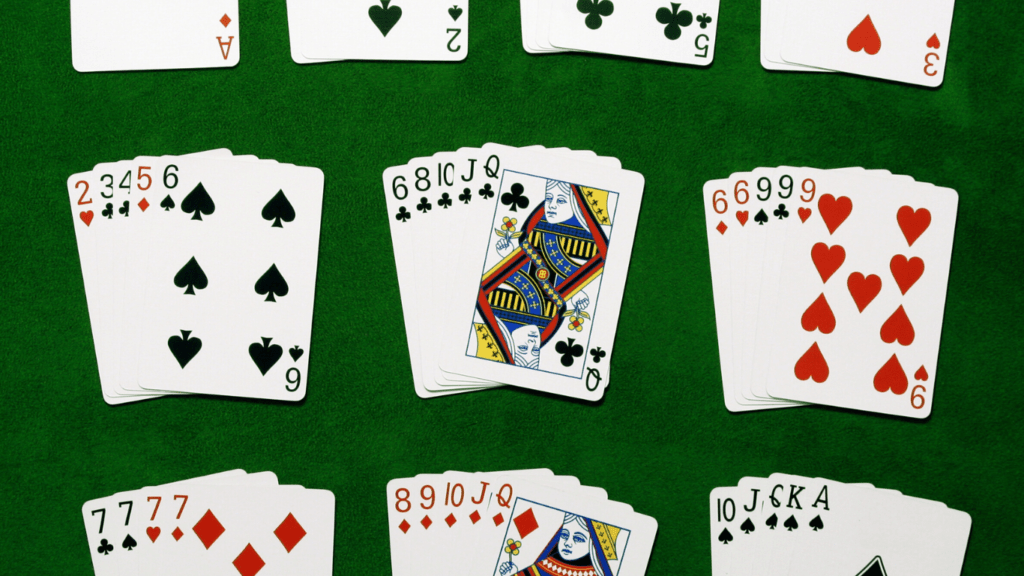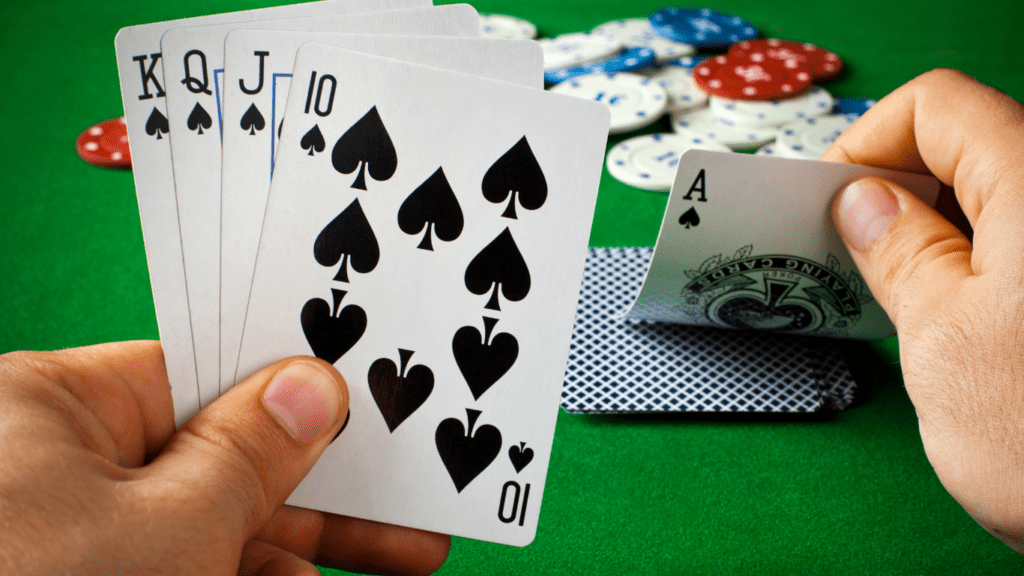High-stakes poker rooms have always fascinated me. They’re not just about cards and chips; they’re arenas where fortunes are won, egos are tested, and secrets are whispered. The air is thick with tension, and every move feels like a calculated risk. It’s a world that’s as thrilling as it is mysterious, and few truly understand what goes on behind those velvet ropes.
Overview Of Insider Tales: What Really Happens In High-Stakes Poker Rooms
High-stakes poker rooms exude exclusivity, attracting elite players, wealthy amateurs, and spectators. These environments operate under an unspoken code of conduct, where respect, composure, and strategic deception shape interactions. Each decision at the table reflects a blend of mathematical rigor and psychological warfare.
Bets escalate rapidly, often amounting to millions in a single hand. For instance, some games feature pots exceeding $5 million, making composure critical. Players manage emotions while deciphering opponents’ intentions, balancing aggression with caution to avoid fatal missteps.
Conversations in these rooms reveal a mix of camaraderie and subtle intimidation. Skilled players, like Phil Ivey and Tom Dwan, are known for their ability to exploit their opponents’ weaknesses without overt hostility. Actions such as prolonged silences or calculated stares intensify pressure, unraveling inexperienced players.
Behind the scenes, deals often occur before or during games. For example, players negotiate splits or discuss staking agreements, where one player finances another in exchange for a share of winnings. These arrangements expand the financial dynamics, adding layers of complexity to the game.
The physical setup in high-stakes rooms enhances the atmosphere. Elegantly designed tables, dim lighting, and essential amenities cater to comfort and focus. Security is tight, with surveillance cameras and personnel enforcing stringent measures. High-profile casinos like Bellagio or Wynn serve as common backdrops for these epic games, further adding to the mystique.
Captivating Stories From High-Stakes Tables

High-stakes poker tables are home to unforgettable moments and larger-than-life stories. Players, strategies, and unexpected twists define these high-pressure settings.
The Personalities And Players
The personalities at these tables range from understated professionals to flamboyant amateurs. I’ve watched legends like Phil Ivey maintain unmatched composure under immense stress, while others like Daniel Negreanu light up the room with wit and charm. Some amateurs, often business magnates or celebrities, bring unpredictability that disrupts even seasoned pros’ calculations. One moment stands out when a billionaire amateur, known for his bold bluffs, unexpectedly took down a pro with an improbable hand, eliciting gasps and laughter from the table.
Rivalries also add drama to these encounters. Players like Antonio Esfandiari and Phil Hellmuth often engage in verbal sparring or extended staring matches that elevate psychological tension. Each personality contributes to an ever-changing dynamic where mind games become as critical as the cards in hand.
Unveiling The Tactics And Strategies
High-stakes poker isn’t just a game of chance; it’s a battlefield of nuanced tactics and strategies. I’ve seen players use “acting,” feigning indecision or exasperation to manipulate opponents into revealing tells. Skilled players deliberately adjust their betting patterns, mixing small pots with sudden massive raises to confuse opponents tracking their style.
Time manipulation is another subtle tactic. I recall a match where a player stalled on a decision, subtly unsettling his rival’s rhythm before executing a calculated massive bluff. Pros also study mental fatigue. Late-night games, stretching past 10 hours, often test endurance, with cracks in focus exploited without mercy.
Bluffing, a cornerstone of poker strategy, takes on legendary proportions at this level. I witnessed a player push over $3 million into the pot on a total bluff, forcing his rival to fold after a grueling stare-down. Combining nerves of steel with split-second decisions separates true masters from the rest at these tables.
The Intrigue Of High-Stakes Poker Culture
High-stakes poker culture thrives on its unique blend of:
- intense competition
- psychological mastery
- financial stakes
The atmosphere is electric, with every decision carrying both tangible and intangible weight.
The Role Of Money And Power
Money defines the essence of high-stakes poker, fueling both the game’s allure and its tension. Pots often grow into millions, attracting individuals who command wealth and influence. Elite players, business tycoons, and celebrity enthusiasts converge, not just to compete but to showcase dominance. For them, massive bets represent both a financial risk and a statement of power.
Private cash deals and staking agreements subtly impact this hierarchy, as lesser-known players often rely on backers to enter games. This financial intertwining creates a web of alliances and rivalries, reflecting the broader power dynamics in the room. Stories of players losing or winning seven-figure sums in a single night underscore the high-stakes nature of these games.
The Psychological Warfare Behind The Game
- Psychological warfare forms the backbone of high-stakes poker, where strategy extends far beyond the cards.
- Subtle gestures, prolonged silences, and measured betting create an unseen battlefield.
- Experienced players read facial expressions, body language, and even breathing patterns for clues, while attempting to mask their own tells.
- Mind games intensify as players utilize feigned confidence, calculated hesitation, or over-the-top aggression.
- During one session I witnessed, a seasoned pro leaned into a conversational charm offensive, subtly destabilizing a wealthy amateur until he folded a winning hand.
These tactics, paired with an acute understanding of human behavior, often determine outcomes more than the luck of the draw.
Writing Style And Narrative Flow
I aim to deliver an engaging and vivid account of high-stakes poker rooms, blending storytelling techniques with factual insights to immerse readers in this exclusive world. My approach ensures a balance between education and entertainment.
Strengths Of The Author’s Approach
Clarity and structure define my writing style. Each section builds logically, detailing the psychological, financial, and social dimensions of high-stakes poker. Anecdotes from poker legends like Phil Ivey and Antonio Esfandiari personalize the narrative, ensuring relevance and depth. I use concise descriptions and contextual transitions to maintain coherence, keeping readers engaged.
Rich storytelling adds authenticity. Highlighting real events, such as multi-million-dollar bluffs or legendary rivalries, paints a compelling picture. I integrate tactical explanations like bluffing and time manipulation, simplifying complex strategies to appeal to novice and seasoned poker enthusiasts alike.
Focus on atmosphere amplifies immersion. Descriptions of venues like the Bellagio evoke luxury and exclusivity, while the portrayal of psychological tension demonstrates the emotional stakes involved. My style recreates the high-stakes poker environment in vivid detail.
Areas That Could Be Improved
More comparative perspectives could enhance depth. Including viewpoints from amateur players or casino managers may offer a diversified lens. Exploring scenarios where psychological strategies failed could bring balance to the narrative.
Tighter integration of statistics and key figures could add authority. For example, breaking down percentages on bluff success rates or bankroll management in high-stakes games may provide additional value for readers seeking actionable insights.
Insights Gained From The Book
Examining high-stakes poker through the lens of written accounts offers valuable perspectives. Books documenting these experiences reveal tactics, ethical considerations, and lessons for players at every skill level.
Lessons For Aspiring Poker Players
Authors emphasize discipline, patience, and adaptability as foundational traits. They describe how mastering emotional control prevents impulsive decisions in high-pressure scenarios. For instance, Doyle Brunson’s Super/System offers detailed strategies, stressing the importance of reading opponents’ patterns and maintaining composure.
Practical tips from these books highlight bankroll management as a critical skill. Advice includes setting strict limits on wagers and understanding when to step back to avoid catastrophic losses. Comparing approaches from strategy-focused works like Phil Gordon’s Little Green Book to anecdotal collections demonstrates varied paths to improvement. Aspiring players gain insights into blending technical poker skills with psychological awareness.
Ethical Implications Of High-Stakes Games
The literature explores the blurred lines between psychology and manipulation. Authors candidly address the moral questions tied to bluffing and exploiting opponents’ weaknesses. While some view psychological tactics as integral to the game, others critique practices like deliberate “slow rolling,” which undermines respect among players.
High-stakes environments, described in books like Maria Konnikova’s The Biggest Bluff, raise concerns over addiction and financial ruin. Authors argue that the stakes often exceed players’ ethical risk tolerance, drawing attention to cascading consequences for those unprepared for such volatility. These narratives encourage transparency and responsibility within the poker community.



 Alex Hobart is the founder of Gamble Time Hub, a cutting-edge platform dedicated to delivering up-to-date gambling news, in-depth sports betting insights, and compelling high-stakes gambling stories. With a sharp eye on the evolving landscape of betting, Alex created the hub to inform, engage, and empower both new and experienced gamblers. Committed to promoting smart and safe play, Alex also champions responsible gambling through practical tips and educational content, making Gamble Time Hub a trusted resource in the gambling community.
Alex Hobart is the founder of Gamble Time Hub, a cutting-edge platform dedicated to delivering up-to-date gambling news, in-depth sports betting insights, and compelling high-stakes gambling stories. With a sharp eye on the evolving landscape of betting, Alex created the hub to inform, engage, and empower both new and experienced gamblers. Committed to promoting smart and safe play, Alex also champions responsible gambling through practical tips and educational content, making Gamble Time Hub a trusted resource in the gambling community.

